Summary
Creating a consistent approach to name fields, building inclusive patterns into the Citizens Advice design system, making products more inclusive for a diverse range of cultures and identities.
Outcome
- Users felt enabled to express their cultures and identities and that the pattern is “accommodating, inclusive and friendly”
- Decrease in session duration and exit rate on name fields pages
- A new addition to the design system with a pattern page live
- Developing knowledge in inclusive design across Citizens Advice
- Hours saved for designers and developers building names into their products
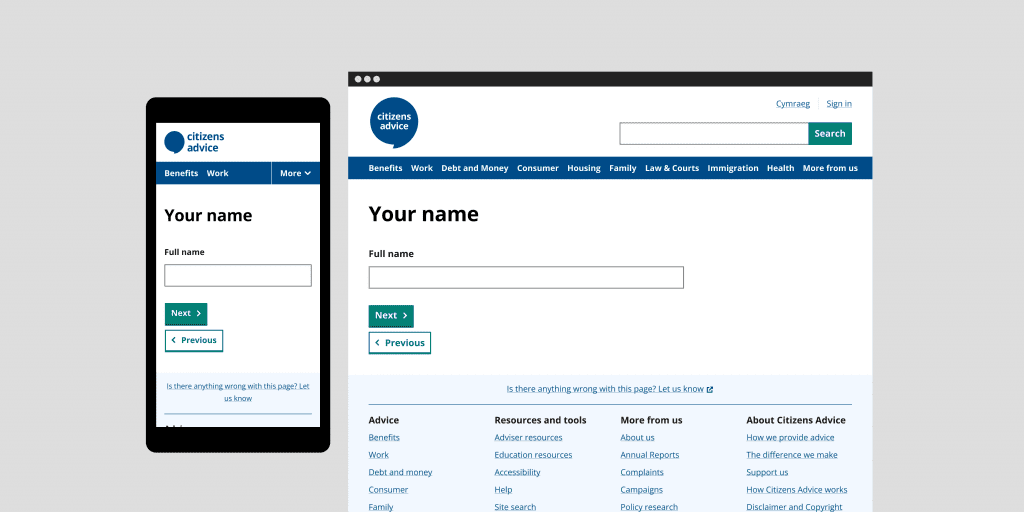
Initial discovery
This was a self initiated piece of work from an article where systems didn’t allow users to put in their names and that names are powerful and hold a lot of meaning.
Looking at the EDI dashboard on intersectionality of users and the Race Disparities research that had been led by the EDI team. This suggested users face challenges with services making assumptions of their names and systems forcing people into western standards for name fields. I know I couldn’t fix this as a larger issue but build inclusive products as technology has a role to play. My hypothesis was that a full name field is more inclusive than a first and last name field.
Following this I did some initial discovery looking at:
- What types of names exist e.g Mixed names, name orders, multiple family names etc
- Reviewing design systems – gov.uk, material design to see how they approached names
- Looked at previous user research, surveys and case studies on names
- Audited our products and different types of name fields, errors, character limits where the data goes
- System challenges with names and challenges with data that exist
- Understanding if there are any technical challenges with name data and a full name field approach
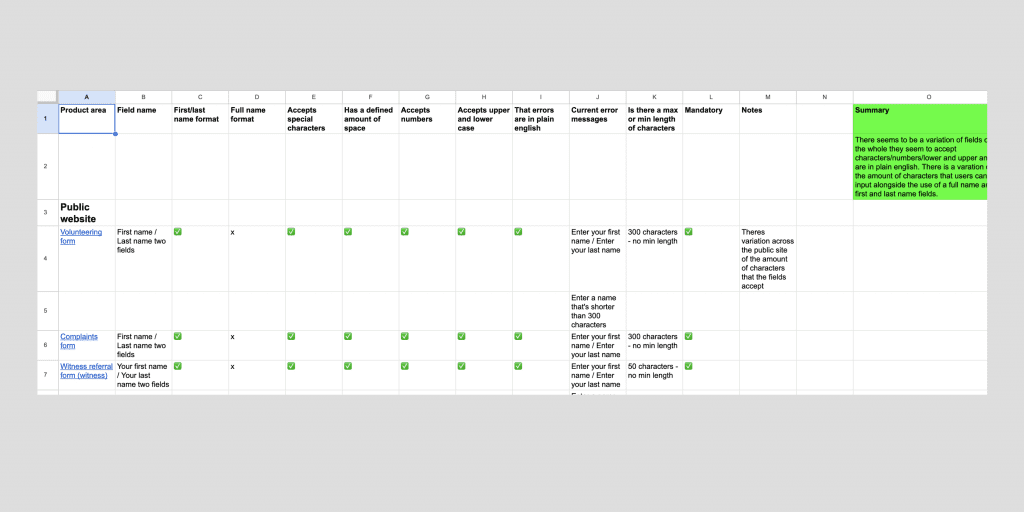
Thinking of the big picture
Due to this work not being in the roadmap I used IDEO’s Desirability, Viability and Feasibility framework to create a plan on taking the work forward, as changes would be across multiple products.
I leant on the desirability to do the work and thought that if I could increase visibility of the issue then this would create more buy in. I shared findings with others in 1:1 conversations to encourage others’ perspectives. I showed my Product Manager evidence of how it links to our organisational strategy and will support ending disparities in access for marginalised people.
Gathering evidence
Initially I thought that this pattern could be pushed to more products as the evidence suggests that this would make services more inclusive, but teams wanted more evidence to push across other products.
Following this, I used Figma to create interactive prototypes to gather additional evidence of challenges users are facing with name fields. With no research resource I created a research plan and used EDI’s research framework for ethnicity screeners to make sure the research was equitable.
Building an inclusive name field
Research indicated that:
- Users felt frustrated when they couldn’t use special characters and felt unsure if special characters would even be accepted when filling a form
- Users felt that online forms and offline forms aren’t set up to accommodate different types of names and that some forms are set up for western names
- Users felt frustrated when their name was adapted, spelt wrong or reordered and had experienced this when accessing services
From the feedback I considered how to make the fields inclusive and sustainable. Looking at field length, supporting special characters and minimum and max input. Alongside this working with a developer showing early iterations, talking through autocomplete as well as the current security issues around only allowing 300 characters and the user need to extend this.
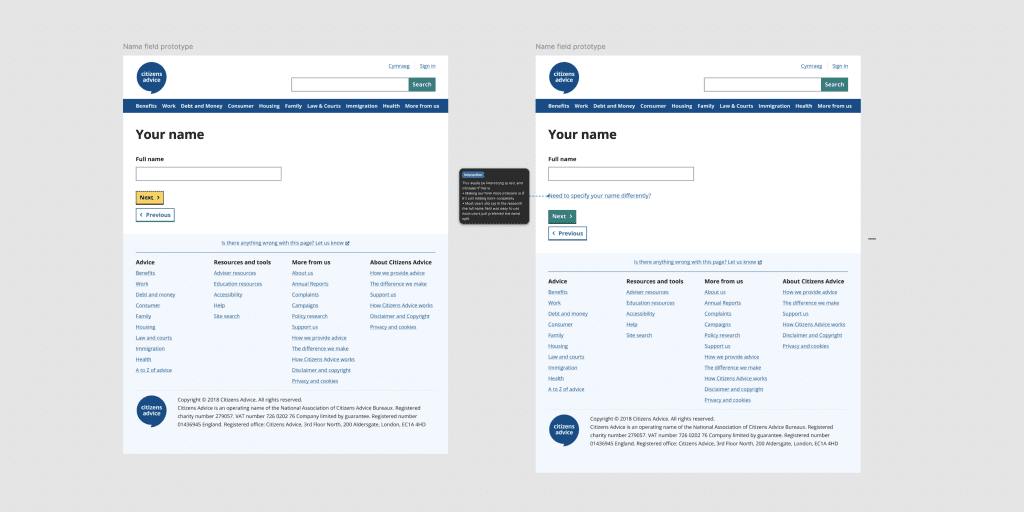
Running a pilot
Collaborating with stakeholders and User Research, we ran a live pilot to collect further feedback, through a survey and google analytics. I worked with the stakeholder to understand if changing to a full name field would affect how they process and use name data. Early indications from the pilot indicate a positive experience for users, alongside a decrease in session duration and exit rate on the name field page.
Preferred name
I also tested a preferred name field so digital services would be able to extract a user’s name without making assumptions alongside a full name field. From the testing users liked this approach as it was something they were used to and it also felt flexible.
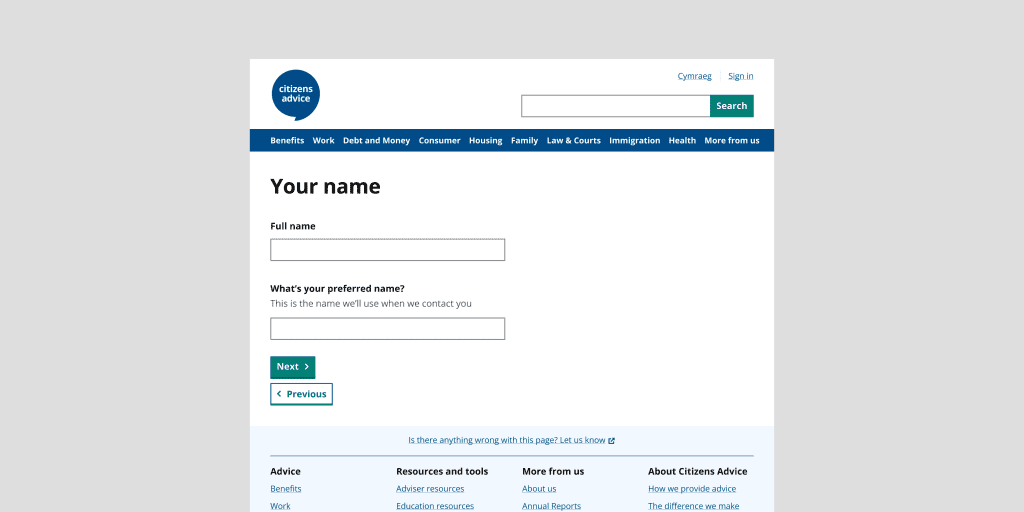
Creating a service standard
This is a positive step for design at Citizens advice. I increased the visibility of inclusive design and that it’s better design for everyone having a more flexible field. I’ve added patterns to the design system, working with the design system community which will save time for teams developing digital services.
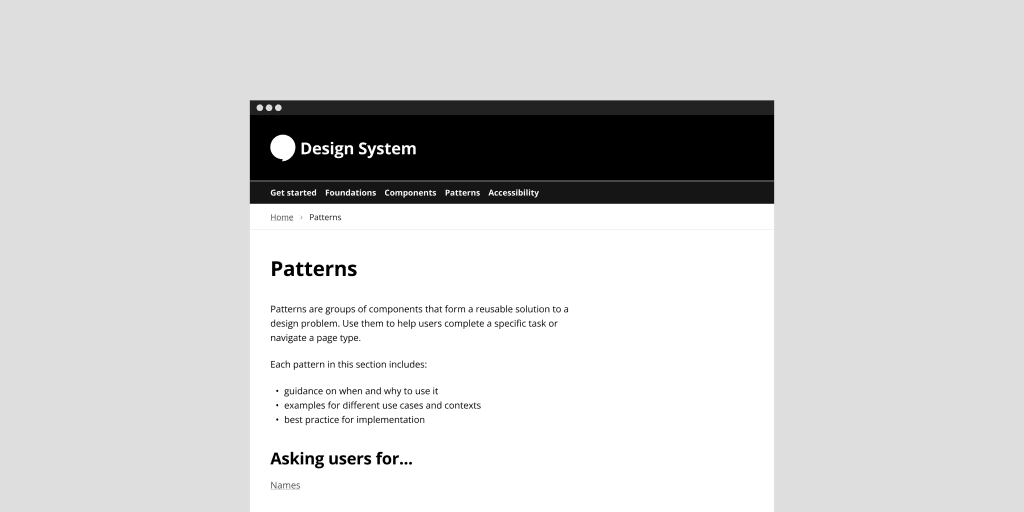
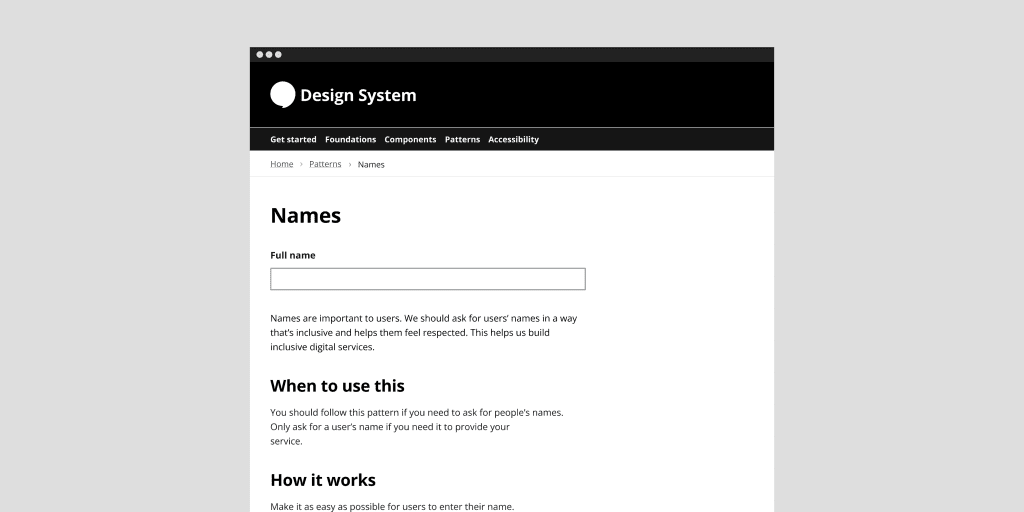
Outcome
- Users felt enabled to express their cultures and identities and that the pattern is “accommodating, inclusive and friendly”
- Decrease in session duration and exit rate on name fields pages
- A new addition to the design system with a pattern page live
- Developing knowledge in inclusive design across Citizens Advice
- Hours saved for designers and developers building names into their products